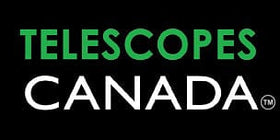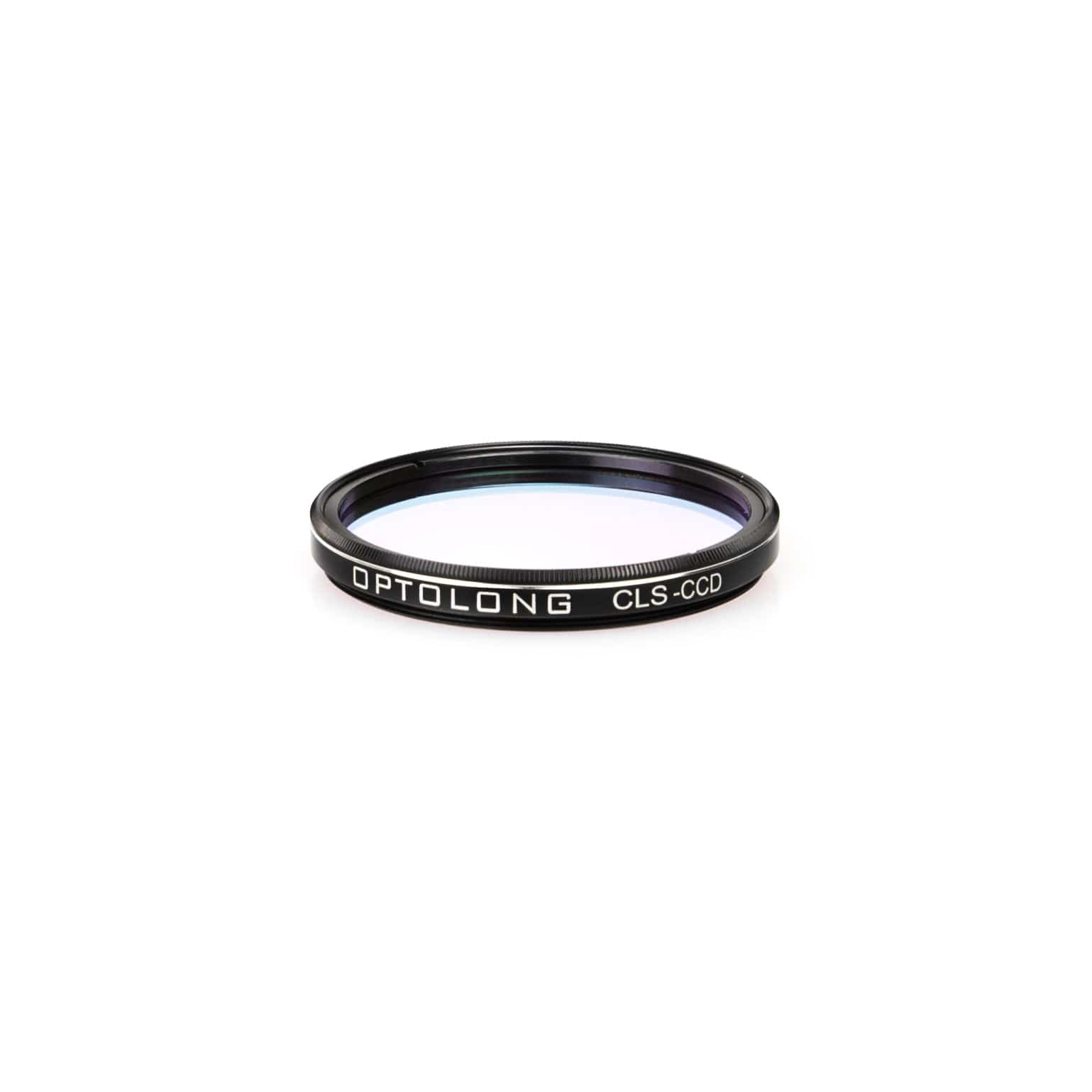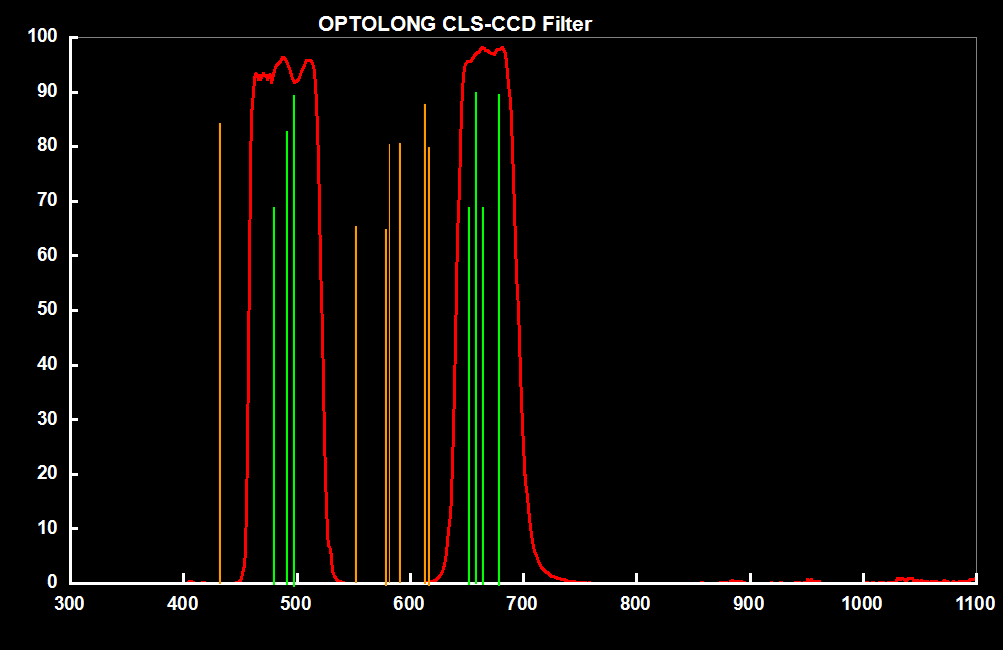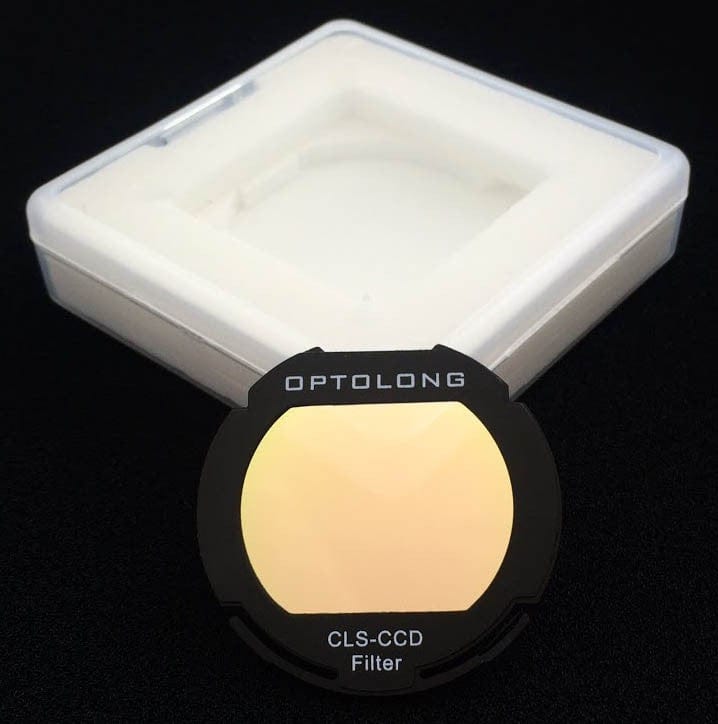Description
The Optolong CLS-CCD broadband filter is designed to improve the visibility of various deep-sky objects by selectively reducing the transmission of wavelengths of light pollutants, specifically those produced by artificial lighting including mercury vapor lamps, both high & low pressure sodium vapor lights and the unwanted natural light caused by neutral oxygen emission in our atmosphere (i.e. sky glow). The filter is highly transparent in the main nebula emission lines at OIII(496nm and 500nm), H-beta (486nm), NII(654nm and 658nm), H-alpha(656nm) as well as SII(672nm). It's suitable for enhancing the contrast and details in light-polluted areas.
Main Use and Performance
CLS-CCD is different from the CLS filter (which is recommended for visual use), with an infrared wavelength 700-1100nm cut-off. It's fit for color CCD cameras and modified DSLRs for astrophotography.
It works well on most emission nebulae, planetary nebulae and supernova remnants.
You will see a noticeable boost in contrast and visibility of the fainter outer nebulae detail.
Note that light pollution filters do not eliminate the effects of light pollution or increase the object's brightness. In many cases they instead increase the contrast between nebula and night sky.
WARNING: This filter is not designed for sun observation.
2. CLS-CCD Spectrum for Reference
How to read the chart?
▲The horizontal axis is the Wavelength in Nanometers(nm).
▲The vertical axis is transmission in %.
▲The RED line shows the transmission of the filter. The artificial emission lines are shown in ORANGE and the emission lines from imaging and observation targets are shown in GREEN.



